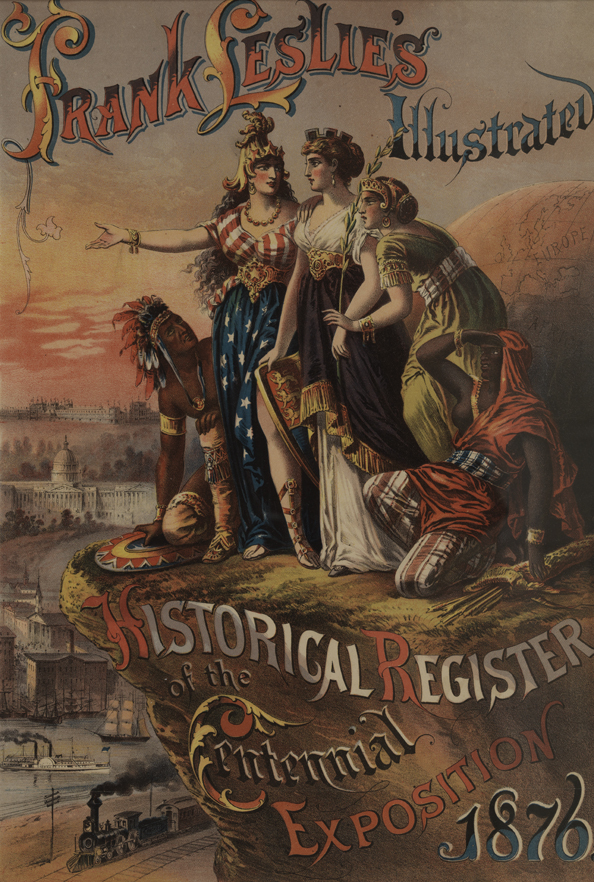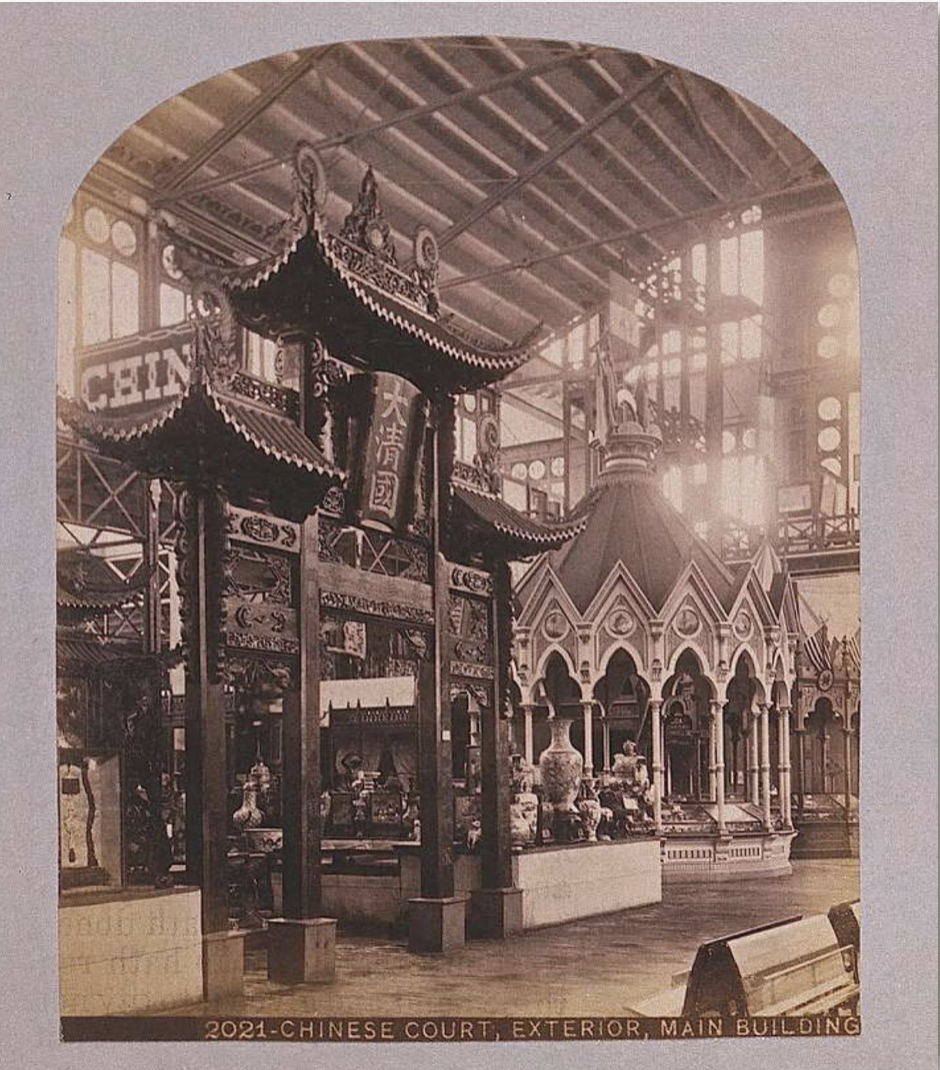The International Exhibition of Arts, Manufactures and Products of the Soil and the Mine, or the “Centennial Exhibition,” Philadelphia 1876
The 1876 Centennial Exhibition, one of America’s first great international exhibitions, was a celebration of technology, social progress, and economic prosperity. Anchored by displays of largely American engineering marvels, including huge Corliss engines, the latest locomotives, electric lights, steam elevators, typewriters, telegraphs, and the telephone, the fair exuded the inevitability of technological progress, now to be led by the United States. Asia was represented among the dozens of international exhibitions, including a large Chinese exhibit organized by Robert Hart, Inspector General of the Chinese Maritime Customs Service, a number of major British and American trading companies, and others (Haddad 2000:54). Some 720 crates were shipped from China to Philadelphia, including exquisite items from the huge art collection of Hu Guangyong 胡光墉 (1823-1885), a powerful Hangzhou banker. This was the first major display of Chinese goods in the US since the early “China Museums” of the 1830s-1840s.






